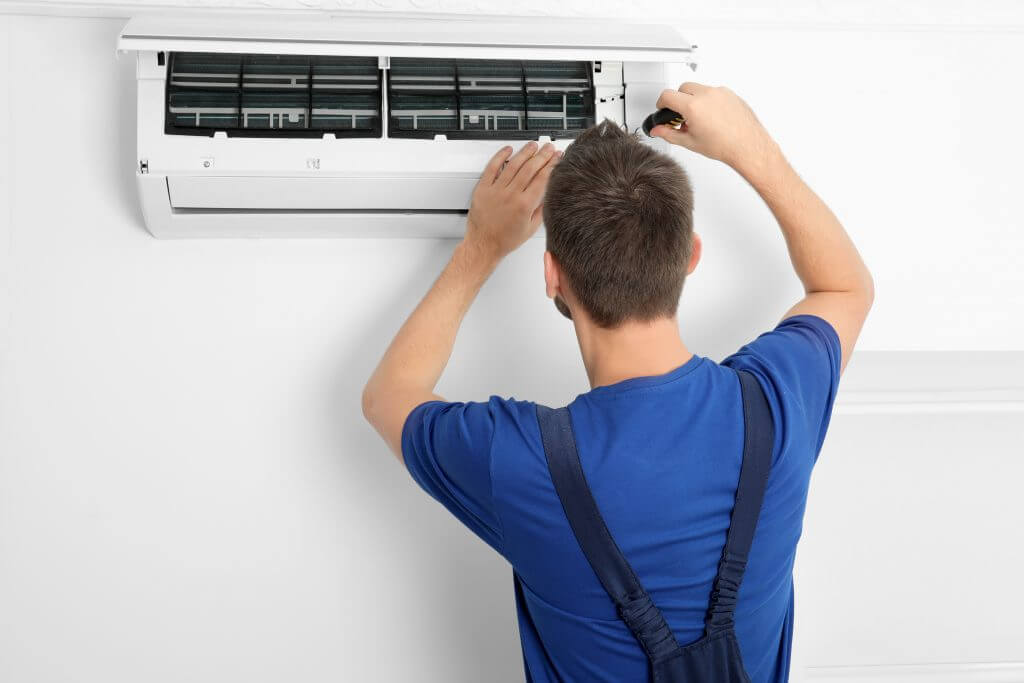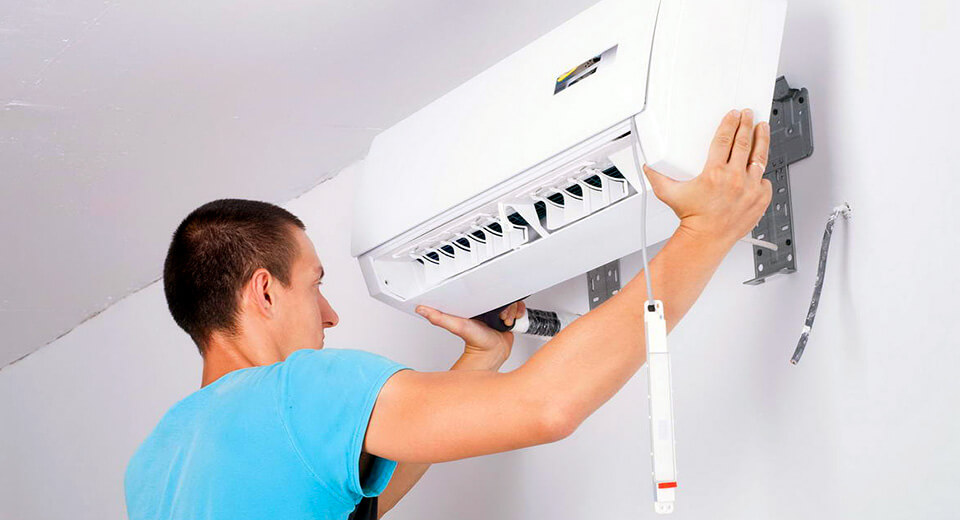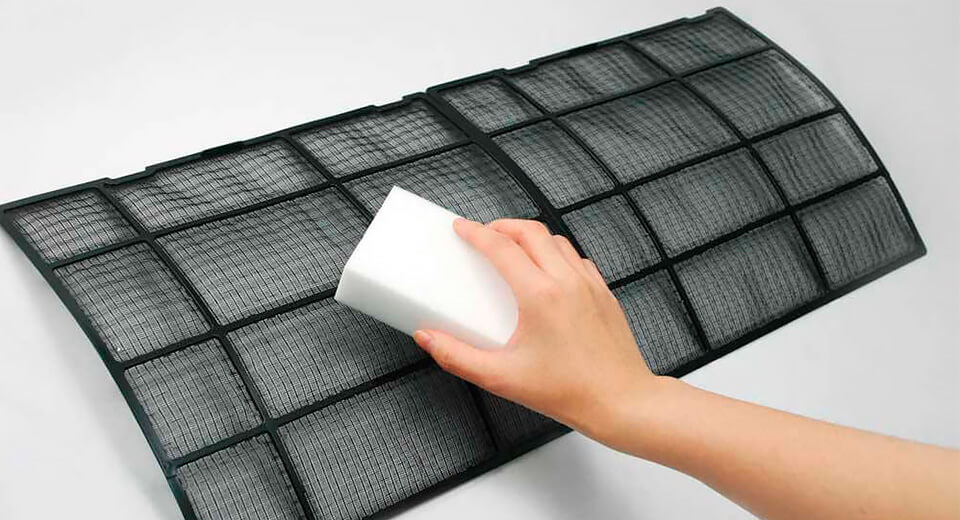

Cleaning the air conditioner is carried out both with the help of specialists and with your own hands. In the second case you just can’t do without the instruction manual. But first of all let’s analyze the signs, according to which it becomes clear that it is time to clean the split-system.
Signs of air conditioner pollution
As dirt accumulates, it impairs the performance and quality of the air conditioner. And most importantly, polluted air affects your health. There is mold, fungus, dust mites, and entire families of different bacteria in the air we breathe. Hence allergies, asthma, various dermatitis and other skin conditions.
In order to avoid such a situation in your apartment there is a light cleaning of split-systems: from one to three times a week – depending on the intensity of using the device. There are several obvious indicators that your air conditioner is dirty.

What should you pay attention to?
- If you feel an unpleasant odor immediately after starting the split system, you know: this is the most obvious sign of contamination. It is possible that there is dirt on the heater grill or there are problems with drainage.
- If the electricity consumption has changed to a higher side, and power to lower – it is time to open the air conditioner and check its cleanness inside.
- Peculiar hum and crackling while the split-system is working could be a signal of filter or turbine clogging. The knocking can come from outside, if it is clogged. In this case the fan blades will not be able to rotate normally and will catch the walls of the case or other object.
- Condensate leakage is another indicator of air conditioner contamination by dust and dirt.
- A “squelch" or “gurgle" occurs when the drainage is not working properly or the refrigerant is lost.
Once you’ve noticed any of these signs of system deterioration, you can either call in professionals to clean it or do it yourself. What to do and how to proceed, we are going to figure out.
Cleaning the indoor unit of split systems
You can clean the internal filters, the fan, the drainage system and the heat exchanger yourself. What do you need for this?
- instruction manual;
- toothbrush;
- soft cloth;
- warm water;
- soap;
- vacuum cleaner.
It is unlikely that you will enjoy touching contaminated internal parts and breathing dust. Be sure to wear a respirator and gloves before starting work.
How to disassemble the air conditioner for cleaning

The process of cleaning a split system at home will take several steps – depending on the part being cleaned. To understand how to get access to each of them, let’s consider them separately from each other.
Be sure to unplug the air conditioner before flushing it! Cover the floor with newspaper, plastic wrap, or damp rags to keep it clean.
Cleaning the filters

Let’s start with the filters. To get to them, you need to understand how to open the air conditioner. It’s simple: lift the cover of the split-system, pull it up and out and bring it to the stop. Filters will be opened in front of us – curved mesh plates, to take them out you have to lift them up a little, then pull them towards yourself and down. Already at this stage you can see the degree of contamination of your device.
Next, the filters need to be washed with cool water. If the dirt does not wash off, hold the filters in warm water for about half an hour. For a stronger effect, add a few drops of liquid soap or crumble some regular soap and stir – let the soap dissolve completely.
Then rinse the parts again with running water, wait until the removed parts have dried naturally, and wipe them again with a soft cloth. You can dry the filters on a window sill if the weather outside is sunny.
Do not dry the filters with warm air currents, such as a hair dryer, as this can deform them.
Before putting back filters you should vacuum the inside elements of the split-system and wipe the accessible places with a soft rag.
So far, we’ve been talking about mesh filters. If you use pocket filters you are not able to clean them, they are simply changed after expiration of their exploitation term.
Washing filters more than six times is highly discouraged, as the filter can lose its properties and degrade its flow capacity.
Cleaning the radiator
The radiators are designed to change the temperature of the distilled air and are one large plate, which consists of many smaller ones. They are located at a very small distance from each other, and if the dust is not so deep in the spaces between them, you can remove it with a brush with a long pile.
A high-powered vacuum cleaner will also do a good job with this task. After the cleaning procedure, wipe the site with a damp cloth until the dust is completely removed.
If the dirt has gone deep, most likely it has already mixed with condensation and formed a dirty film. It is not possible to remove it on your own. Steam cleaners are used to clean such dirt, and it is better to entrust this work to professionals.
You can find the radiator by opening the bottom cover of the split system. Remove the plate from the outside. After cleaning, repeat the sequence of operations in reverse order.
Air conditioners troubleshooting – complete guide DYI
Cleaning the fan
An important element of the system is the rotary fan. It is an oblong shaft with blades that “pushes" the cooled air into the room. Its contamination can lead to complete failure, as accumulated deposits of dust and dirt block the work of the fan.
To prevent this from happening, you need to dissolve some soap in warm water and splash it on the blades. After the dirt soaks, turn on the fan to its lowest speed. Be prepared for liquid droplets to fly around. Then stop working and clean the area by hand: using a brush or toothbrush and the same soapy solution.
Before you start cleaning the fan, cover the wall with a protective film and lay newspapers on the floor, so that the dirt flying out of the air conditioner will not get on them.
It is worth being very careful: try not to damage the fan blades, otherwise it will be necessary to replace it completely.
Cleaning the drainage system
If the resulting grease and dirt clog the drain passages, the water will not flow out, but into the room. Fungus and mold will not “sit" in the spigots for long and will begin to spread: first to the drain pan, and then to the radiator. All this will again affect cleanness of inhaled air.
You can clean the drain with your own hands only superficially: with a brush and detergent, such as dishwashing detergent. After treating the drain itself, check that the drain pan is clean, or better yet, wash it for prevention.
A professional treatment of the drainage system is to antibacterials it with steam. Another option is to completely clean the entire air conditioning system by spraying a special substance.
At this point, cleaning your home air conditioner on your own is complete. If you do not want to spend a lot of time, then there is an easier variant – you can buy a split-system with an automatic cleaning system. Such a system is working by a simple principle: periodically switching to “idle" mode, it dries the internal knots and details.
Sometimes such conditioners are accompanied by an ionic system of air cleaning – there is an ionization of dust, and it easily passes into the dust-collector. However, even such “smart" conditioners have to be cleaned manually, because they do not wash filters by themselves, and ionization itself is still an ambiguous and mysterious process.
Best Air Conditioner Buying Guide for 2021
Cleaning outdoor unit

The most difficult part of cleaning an air conditioner is probably the outside of it. The outdoor unit is usually located outdoors, and access to it is most often complicated by its height and location from the street. The only good thing is that it is necessary to clean such blocks only once or twice a year.
What should you do?
- Turn off the power to the unit.
- Remove the top cover and immediately imagine the amount of work to be done.
- Remove any debris that can be removed manually.
- Take a powerful vacuum cleaner and treat the available surfaces with it.
- Try not to touch the electrical circuit of the unit – it can only be repaired by professionals.
- Clean what is left with a medium-lint brush.
- Wipe the cleaned surfaces with a soft, damp cloth.
To clean the outdoor unit more often use steam cleaners or mini-washers, which have a greater effect. It is important to remember not to run the air conditioner until all internal parts are completely dry.
Recommendations for cleaning the split system

Even if there is nothing wrong with your unit and it works like clockwork, there are some simple maintenance tips that you should follow.
- Let’s start with the fact that if your apartment is located on the first floors of the building – from the first to the fourth – it is recommended to clean the outside unit of the air conditioner once every three months, because the dirt in this case is bigger and more intensive than on the upper floors.
- If the conditioner is located on the level higher than the seventh floor, it is possible to clean it once in two years and less often. True, only if you do not notice the signs of contamination that we described earlier.
- No matter what floor you live on, the indoor units should be cleaned 3-4 times a month, because even with good work, dust and dirt will settle on the walls and critical parts. It is better to spend some minutes per month for easy washing of a conditioner rather than several thousands for its repair or substitution
- Don’t forget to monitor the condition of the outside unit in winter time. Frost, icicles, and snow can cause your air conditioner to break down, as well as threaten the lives of people and cars standing below – under your windows.
If you pair your air conditioner with an air intake vent with filters, the air conditioner tends to get dirty less often. The breezer, for example, delivers air that is already purified into the room.
You can close the windows to keep the dust and exhaust out of the house. In addition, the breezer also works in the recirculation mode, that is, it will help clean the air that is already in the room. Of course, as well as in case of split-systems, the equipment needs maintenance, but with this equipment it is much easier – it is enough to periodically change the filters. In return you will get clean fresh indoor air, recirculation, heating of incoming air in winter, silent operation and complete protection against dust and dirt.
How to buy the best air conditioner
A few tips to maintaine of the air conditioner
- To begin with, check the correctness of installation of the air conditioner, consult the specialists if you have doubts.
- Make sure that there is no draught in the room when the split-system is working. Otherwise the device is working with high load on the fan and compressor – it reduces its operation term.
- The same can be said about the split-system’s work with maximal blowing and minimal temperature mode. These modes demand high capacity from conditioners that are often used to negatively influence the details of the internal block.
- Overhaul and cleaning should be done at least once a year. In the case of constant use, twice a year. This “inspection" of your air conditioner will increase its service life and reduce the risk of serious repairs in the future.
- Install your split system in the most sunny location possible.
- Provide a “corridor" of free space in front of the air stream coming out of the split-system.
- If the conditioner is not used for a long time, set it in a ventilation mode. In this case unnecessary smells will disappear and you will disperse condensate.
- Try as much as possible to protect your outer unit from the influence of an aggressive environment. For example, install a canopy over it or put it in a vandal-proof grid with a cover.
- Do not place any objects on the surface of the outdoor and indoor units, do not touch them with wet hands, and do not allow animals or birds to land on their housing.
